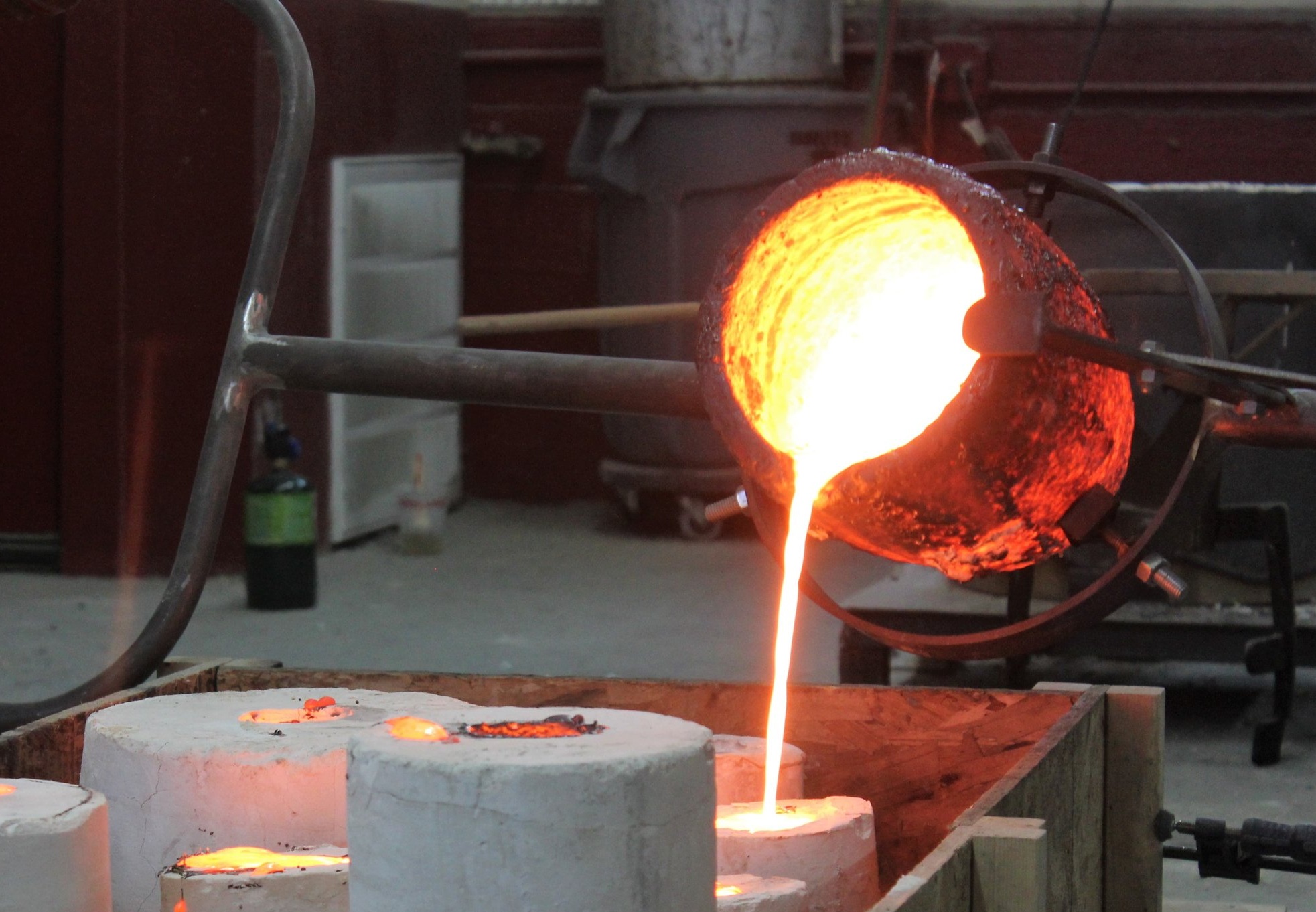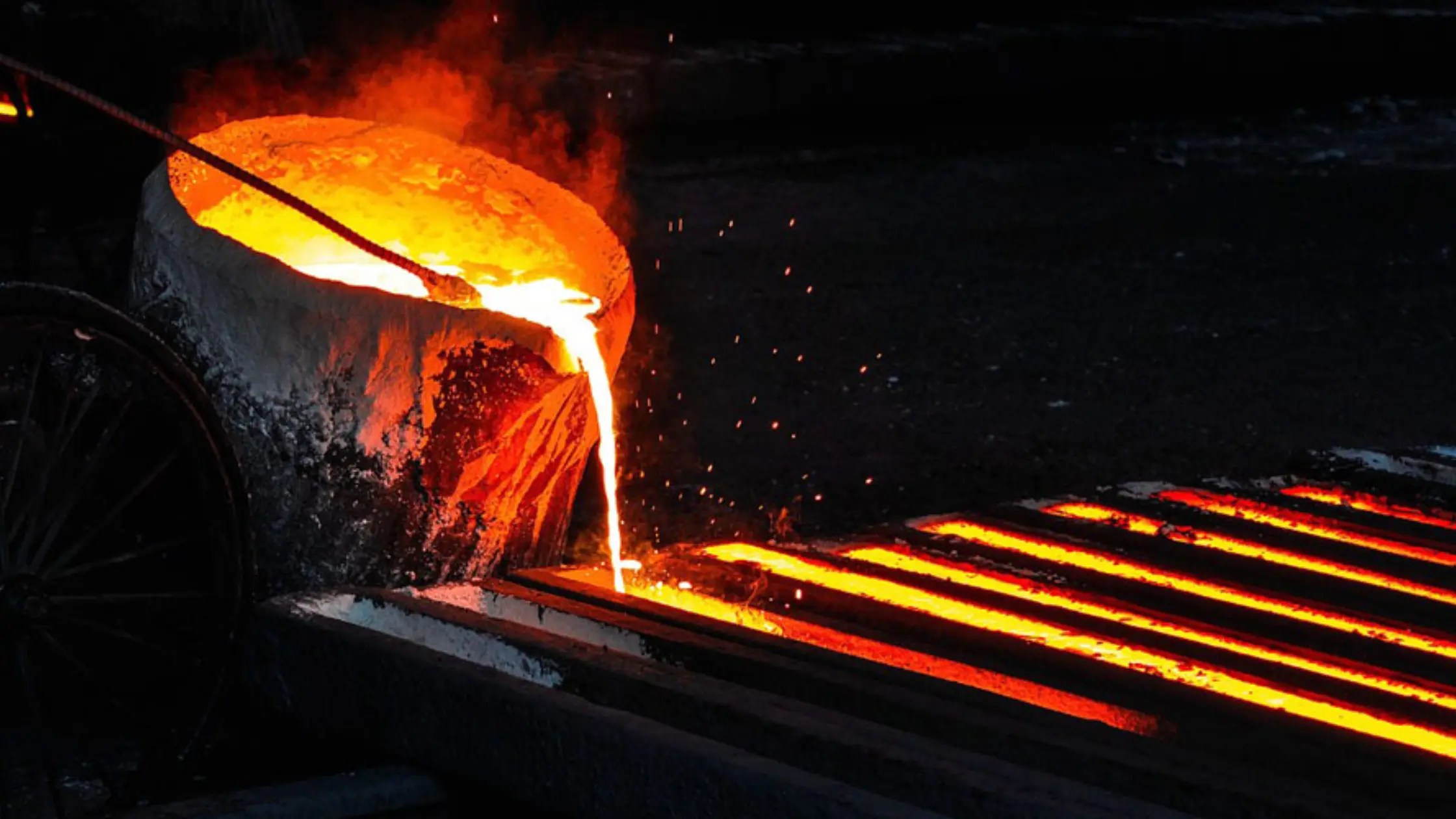The science and precision behind every Aluminum Casting cycle
Wiki Article
Discovering the Core Solutions Provided by a Steel Factory: An Extensive Introduction
The solutions supplied by a steel factory play an important role in numerous markets. From steel casting procedures to mold and mildew construction, each facet is designed to ensure accuracy and effectiveness. Quality assurance steps better boost the reliability of the products generated. Comprehending these core services can reveal how they accommodate certain industrial demands. What subtleties in these offerings add to their performance and adaptability?Recognizing Metal Casting Procedures
Steel spreading is a centuries-old technique, comprehending its procedures continues to be vital for modern manufacturing. Steel spreading involves putting liquified steel into a pre-formed mold and mildew, allowing it to strengthen into the desired shape. This process incorporates several essential phases, consisting of thawing the metal, preparing the mold, pouring, and cooling.Different casting methods, such as sand spreading, die casting, and investment casting, accommodate varied manufacturing demands and product buildings. Each strategy offers unique advantages, such as price performance or accuracy, making them ideal for varied applications.

Pattern Making Strategies
Pattern making strategies play a crucial function in the metal shop procedure, functioning as the foundation for creating precise spreadings. Typical methods have actually been matched by modern electronic techniques, which improve precision and performance. Comprehending both methods is vital for enhancing manufacturing and fulfilling the needs of various applications.Typical Pattern Making
When developing metal spreadings, conventional pattern making acts as a fundamental strategy that has stood the examination of time. This technique entails crafting a physical version, or pattern, which duplicates the wanted shape of the last spreading. Normally made from plastic, metal, or timber, these patterns are developed to account for aspects like contraction and mold launch. Artisans skilled in this craft use numerous techniques, consisting of split patterns and core prints, to guarantee exact molding. The procedure frequently needs precise focus to detail, as the pattern directly influences the high quality and accuracy of the last item. Traditional pattern making not only personifies craftsmanship however likewise guarantees the reliability and consistency needed in the steel spreading industry.Modern Digital Techniques
The evolution of pattern making has actually welcomed modern-day electronic techniques, considerably boosting accuracy and efficiency in the metal casting procedure. Computer-aided design (CAD) software enables designers to develop detailed patterns with specific requirements, minimizing human error and product waste. Additive production, or 3D printing, enables fast prototyping of patterns, helping with quick adjustments and iterations. These electronic techniques support intricate geometries that traditional techniques might battle to reproduce. Furthermore, integrated electronic process enhance interaction between layout and manufacturing groups, making sure a natural procedure from concept to casting. Eventually, the adoption of modern electronic techniques in pattern making not only optimizes production timelines yet likewise elevates the top quality of the last metal parts, positioning shops at the forefront of innovation in the sector.Mold Design and Manufacture
Mold and mildew style and fabrication are important components in the steel foundry procedure, influencing both the high quality and accuracy of castings. Various sorts of molds, consisting of sand, financial investment, and ceramic, serve different applications and products. The style procedure involves several essential actions that assure molds are tailored to meet particular production requirements.Sorts of Molds
In the domain of metal foundries, different sorts of mold and mildews play a crucial function in forming the end products. The most common types consist of sand molds, which are cost-efficient and flexible, ideal for complicated forms. Covering molds, understood for their smooth surface areas, provide high precision and are usually utilized for smaller sized manufacturing runs. Investment molds, or lost-wax molds, are used for complex styles, enabling for high information and exceptional surface finish. Long-term mold and mildews, made from steel, are long lasting and suitable for high-volume manufacturing, creating regular results. Finally, ceramic molds are utilized for specialized applications, especially in casting high-temperature alloys. Each mold type is selected based upon the certain demands of the casting process and the wanted properties of the last product.Design Process Steps
Picking the proper kind of mold and mildew is only the start of the procedure in a steel shop. The layout procedure entails several crucial actions, beginning with in-depth requirements based upon the wanted item. Designers use computer-aided layout (CAD) software application to create accurate mold and mildew designs, guaranteeing all features and dimensions line up with manufacturing demands. After settling the design, the construction of the mold and mildew starts, which may entail materials such as metal, sand, or ceramic. This stage calls for precise focus to detail to assure precision and durability. As soon as the mold is fabricated, it goes through screening to validate its efficiency prior to being utilized in production. Each action in this process is essential for accomplishing premium castings and conference market standards.Thawing and Putting Methods
Numerous melting and pouring approaches are necessary to the metal foundry procedure, each designed to fit various kinds of steels and production demands. Usual strategies include induction melting, crucible melting, and electrical arc melting, which offer to efficiently reach the required temperature levels for various alloys. Induction melting utilizes electro-magnetic fields to warm steel, making it suitable for accurate temperature control and very little contamination.Putting methods vary also, with options such as ladle pouring, lower pouring, and tilt putting. Ladle putting is the typical technique, permitting handbook control over the circulation of molten metal. Bottom putting, often utilized for big spreadings, enhances efficiency by minimizing disturbance throughout the put. Tilt putting offers improved accessibility for complex molds, promoting the filling procedure.
Each approach's option directly affects the quality of the end product, highlighting the importance of picking the appropriate strategy based upon certain task needs.

Heat Therapy and Finishing Processes
After the melting and putting procedures are completed, heat therapy and ending up processes play an essential duty in enhancing the buildings of actors steel elements. Warm treatment includes controlled heating and cooling cycles that change the microstructure of steels, enhancing characteristics such as ductility, toughness, and hardness. Metal Foundry. Numerous methods, consisting of tempering, annealing, and quenching, are used depending upon the specific demands of the ended up itemComplying with warm treatment, finishing processes are critical for accomplishing the wanted surface features. Strategies such as grinding, brightening, and sandblasting are utilized to eliminate blemishes and enhance the aesthetic quality of the steel. In addition, surface therapies like coating and plating can improve corrosion resistance and use homes. With each other, these procedures ensure that actors metal components meet rigorous performance standards and accomplish their designated applications, ultimately adding to the general quality and long life of the end products.
High Quality Control and Testing Procedures
Assuring the top quality of actors metal elements requires rigorous quality assurance and screening treatments throughout the manufacturing procedure. Metal foundries apply a number of phases of evaluation to assure that products meet sector requirements and consumer specifications. This starts with basic material analysis, where the chemical make-up and physical residential or commercial properties of metals are assessed. Throughout manufacturing, in-process assessments are executed to monitor casting dimensions and spot any type of problems early.
Custom Solutions and Design Support
While conventional castings serve lots of applications, the requirement for custom-made remedies and design support has actually become significantly necessary in the steel shop sector. As firms benefit competitive benefits, customized products that meet specific demands are often essential. Steel factories provide knowledge in layout and material choice, making it possible for clients to enhance performance and performance.Design support includes a variety of services, from initial style principles to prototypes and final production. Collaborating closely with customers, factories can address one-of-a-kind difficulties, ensuring that custom spreadings satisfy specific specs. Advanced modern technologies, such as computer-aided layout (CAD) and simulation software program, enhance the accuracy of customized services.
In addition, shops might supply post-casting solutions, consisting of machining and ending up, to additional fine-tune the end product (Metal Casting). This all-encompassing support not just accelerates the growth procedure yet also guarantees the delivery of premium, custom parts tailored to varied sector needs
Often Asked Questions
What Kinds Of Metals Can Be Cast in a Factory?
A foundry can cast a variety of steels, consisting of iron, aluminum, copper, brass, steel, and bronze. Each steel offers special homes, making them ideal for various applications in sectors such as vehicle, aerospace, and production.Exactly how Long Does the Steel Casting Process Normally Take?
The steel spreading process usually takes anywhere from a few hours to a number of days, relying on factors like the complexity of the layout, sort of metal, and manufacturing methods used by the shop.
What Are the Environmental Impacts of Steel Foundries?
Steel foundries can add to air and water contamination with discharges and waste. Resource usage, consisting of energy and basic materials, even more aggravates environmental deterioration, requiring sustainable practices to minimize their environmental footprint and promote accountable procedures.Exactly How Do Shops Make Sure Worker Safety And Security During Operations?
Shops assure employee security via rigorous training programs, making use of individual safety devices, routine security audits, and adherence to industry policies. These actions collectively produce a more secure working atmosphere for all employees associated with procedures.What Industries Typically Utilize Metal Shop Solutions?
Industries such as automotive, aerospace, building, and making frequently utilize steel foundry solutions. These markets count on factories for creating actors elements essential for machinery, automobiles, and architectural applications, guaranteeing high quality and resilience in their products.Metal casting includes pouring liquified steel right into a pre-formed mold, permitting it to strengthen right into the desired shape. Mold and mildew design and construction are essential components in the metal factory process, affecting both the high quality and precision of spreadings. Selecting the proper kind of mold and mildew is only the beginning of the process in a metal foundry. Metal Foundry Numerous melting and pouring techniques are necessary to the steel shop process, each developed to suit different types of steels and production requirements. After the melting and pouring procedures are finished, warm therapy and ending up procedures play an essential function in improving the residential properties of cast metal parts.
Report this wiki page